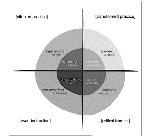ABSTRACT
Upon agreeing that the use of technology implies a mentality characterized by a more horizontal mindset between languages (GNERRE, 1991 [1986]GNERRE, M. Linguagem, escrita e poder3 ed São Paulo: Martins Fontes , 1991 (1986).; OLSON, 1997 [1994]OLSON, D. R. O mundo no papel: as implicações conceituais e cognitivas da leitura e da escrita. Tradução de Sérgio Bath. São Paulo: Ática, 1997 (1994).), that every literacy is metamediatic, and that cultural appropriations emerge from hybridizations (GARCIA-CANCLINI, 2011[1997]GARCIA-CANCLINI, N. Culturas híbridas: estratégias para entrar e sair da modernidade, 4a Ed, 5a Reimpr. São Paulo: Editora da Universidade de São Paulo, 2011 (1997).), we thus should, as language teachers, investigate how these concepts may help build an understanding of the process of learning English when the ICDTs (Information and Communication Digital Technologies) come into play. Therefore, this article presents a reflection about the use of video production and edition tools applied to language learning and teaching in a federal public school. This work was carried out based on a case study about a movie trailer designed by a learner to fullfil a task proposed in the English classes. After the evaluation, the teacher invited the learner for a video-recorded interview wherein he was expected to verbally react about his own production. His trailer and the interview transcript enabled reflections about the use of video production technologies, by means concepts such as decollecting and remixing (GARCIA-CANCLINI, 2011[1997]GARCIA-CANCLINI, N. Culturas híbridas: estratégias para entrar e sair da modernidade, 4a Ed, 5a Reimpr. São Paulo: Editora da Universidade de São Paulo, 2011 (1997).), which were associated with Lemke's concepts of topology and typology so as to analyze the effects of the use of technology for learning English. These concepts paved the way to a critical review of the sequence of activities employed throughout the lessons, and allowed us to observe that the learner undertook greater effort in relation to the topologic features of the genre, which might have been an outcome of the sequence proposed by the teacher. If this is the case, we suggest that we ought to aim for pedagogic practices that promote a more horizontal relationship between the topologic and typological aspects of language in use, particularly when it comes to practices that involve ICDTs.
Keywords:
ICDTs; English language teaching; digital literacies

 Thumbnail
Thumbnail

